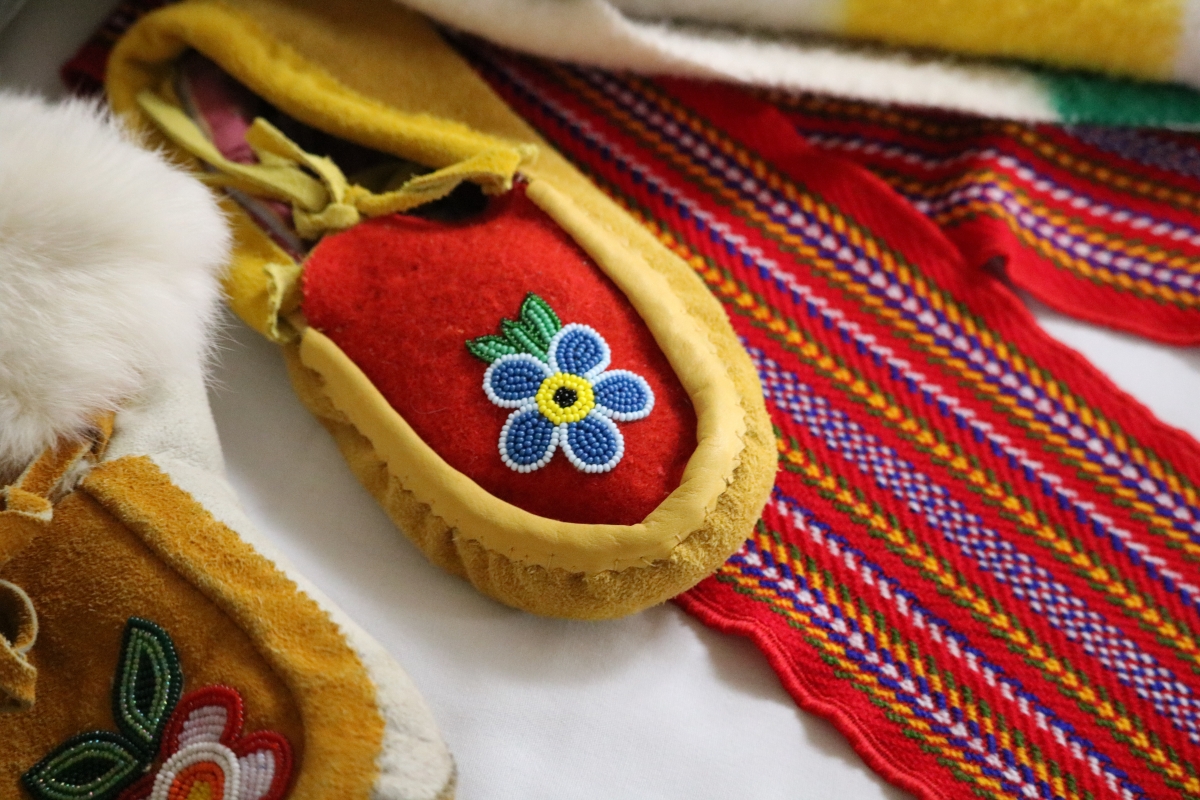- Home
- |
- Our Culture
- Louis Riel
- Métis Firsts in North America
- Métis Minute
- Who are we?
- Métis Nation Database
- Kids' Corner
- I Love to Bead Month
- |
- Departments / Affiliates
- Citizenship
- Culture & Heritage
- Early Learning & Child Care
- Economic Development
- Engagement and Consultation
- Energy, Infrastructure & Resource Management
- Health & Wellness
- Housing and Property Management
- Infinity Women Secretariat
- Louis Riel Capital Corporation
- Louis Riel College
- Louis Riel Institute
- MEDOCare Pharmacy
- Métis Child and Family Services Authority
- Métis Employment & Training
- Métis Justice Institute
- Métis Rights & Constitution
- Michif Language
- Provincial Education
- Red River Métis Business Development Corporation
- Red River Métis Community Resource
- Red River Métis Fur Company
- Red River Métis Veterans
- Riel House
- Sixties Scoop
- Youth
- |
- Government
- |
- Jobs
- |
- News
- |
- Contact
Beadwork
May 1, 2023

The Métis beadwork developed patterns that combined First Nations beadwork with the floral embroidered patterns introduced by French-Canadian nuns working in the Roman Catholic mission schools. The techniques and patterns of floral silk embroidery traditions from France were incorporated into traditional Aboriginal porcupine quill work designs, which progressively began to reflect their own distinctive style.
Métis artisans in the Red River region used seed beads, silk, and llama threads obtained through the fur trade; as time progressed, they incorporated glass beads into their designs. The floral beadwork was typically placed against a black or dark blue cloth background, which was often trimmed with silk ribbons.
Beadwork was found on many items of traditional Métis clothing, functional hide, and cloth work. The clothing that was decorated included moccasins, coats, vests, leggings, belts, bags, and mittens, with the bags frequently containing family-specific patterns or identifiable colors. Other decorated items included tablecloths, wall pockets and cloth frames for religious pictures.
So prevalent was the use of floral design in Métis beadwork that the Dakota and Cree referred to the Métis as the "Flower Beadwork People." Even early 19th century European travelers referred to the decorative beadwork on Métis clothing. Many were so impressed with the beautiful creations that some articles were distributed throughout both North America and Europe as trade goods.
Generations of Métis women have produced countless objets d'art for their families, and for sale or trade. There are contemporary artisans who continue beadwork traditions today and continue to bead pieces such as moccasins, coats, and mittens. Jennine Krauchi is one Métis master beadwork artist who continues to keep the beadwork tradition alive and was a catalyst for Métis beadwork styles being recognized and revitalized. She creates clothing and undertakes replica work for many organizations across the Métis Nation Homeland and across the world, including the Manitoba Museum, Parks Canada, the Canadian Museum of History, the Canadian Museum for Human Rights and other institutions in Scotland, France, and the United States.
